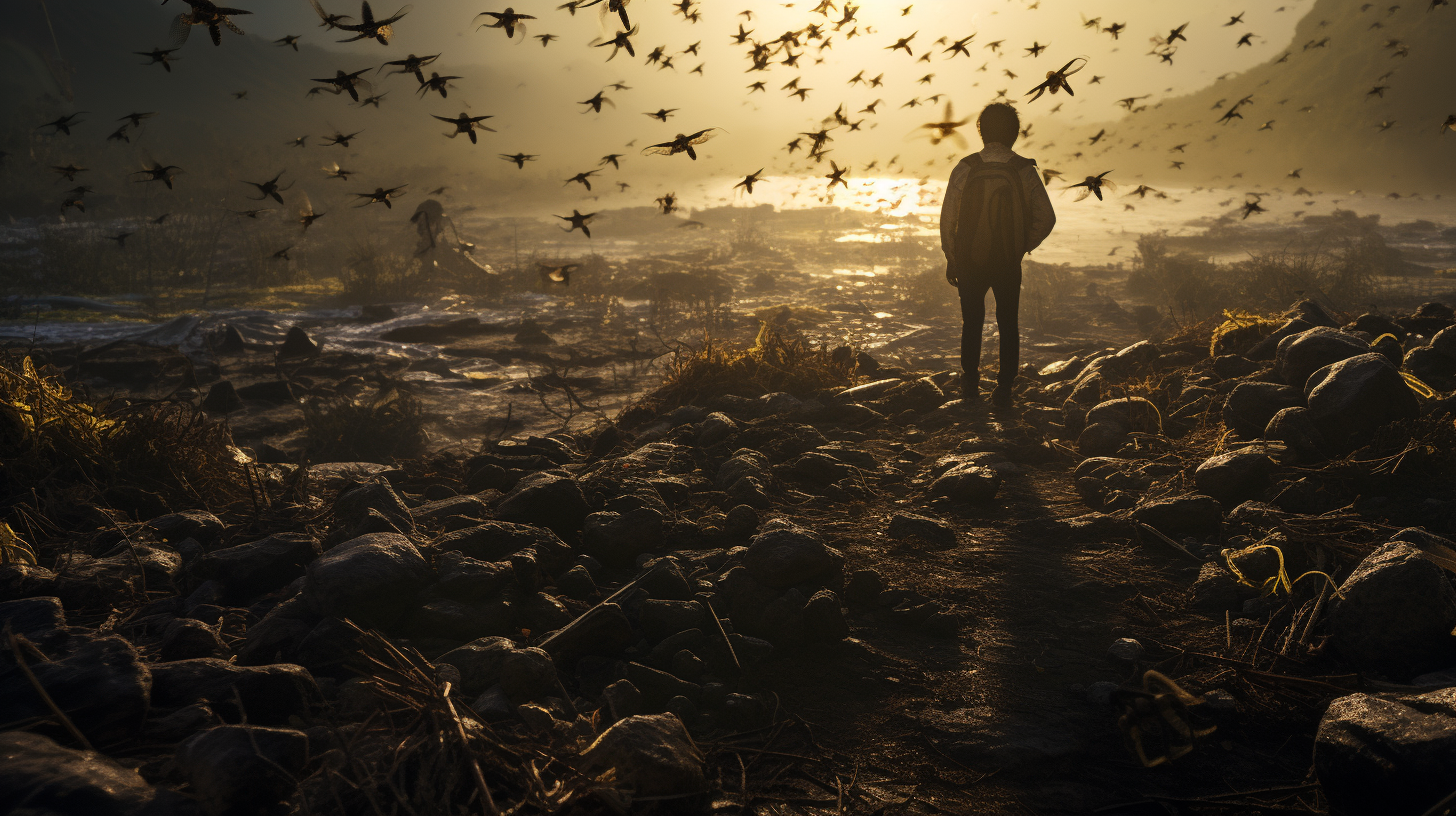In a landscape where the rustling leaves were once a symphony, now lies an eerie silence. The air, which used to hum with the beat of a million wings, is still. Luscious greenery that flourished beneath the diligent work of tiny legs has faded to a disheartening brown. Our world has unwittingly crossed into the penumbra of an ecological twilight zone, a question heavy on our minds: Where have all the insects gone?
Turn a stone, gaze under the chirping foliage, or scan the once vibrant meadows, and you’ll find them devoid of the creeping and crawling denizens that are the cogs and wheels of Earth’s living machinery. The Extinction Hour ticks ever closer not just for the charismatic megafauna we’ve mourned, but for these miniature marvels too. Their absence is a silent alarm of a faltering planet.
The statistics scream of a holocaust. Surveys indicate that 40% of insect species are dwindling and a third face extinction. This is nothing short of an entomological apocalypse, with causes rooted as deeply in habitat destruction as they are in the invisible miasma of pesticides and rampant climate shifts.
‘The bees, which once buzzed in plentitude around every spring bloom, are now relics of a myth’, laments an entomologist we couldn’t recall because names no longer matter — the cause outlives the individual. And with the bees, go our hopes of a future where fruits droop heavy on the branch and crops stretch to the horizon: for they are the master pollinators without whom the tapestry of life unravels.
It’s not just the bees. The brilliant flashes of butterflies that should dance through the air like living embers are snuffed out. The dazzling diversity has crumbled, leaving behind the gray, lifeless palette of a world where nature’s balance has been tipped beyond recovery.
One must wonder what drives this mass exodus from life. Initially, one might point a finger at urban expansion — the relentless devouring of verdant land for concrete jungles. But that is a mere fraction of the tale. The unseen killers lie in the guise of climate deviation — the broiling summers and suffocating winters, erratic and cruel, give no quarter to the delicate cycles of insect life.
Where does this leave the human saga, you may ponder. As gears grind to a halt in the machine that is Earth’s ecosystem, the grocery aisles grow sparse. The fruits of labor wither, for there is no labor left to tend to them. Humanity, too engrossed in return margins and quarterly reports, failed to realize that insects were their silent partners in the endeavor to thrive.
Are there solutions to be found in the pages of this foregone narrative? Could we, even now, champion a revival or is this the forlorn epilogue of a story written by disregard and neglect? The efforts, if any, seem like whispers against a tempest of indifference.‘Survival now is but a chase against time’, a voice echoes in the void left by a billion vanished wings. It is an omen, a prophecy of a time not forecasted but shaped by human hand.
As dusk falls on this green but grim spectacle, the question ‘Where have all the insects gone?’ becomes more than a query. It’s a requiem, a final ode to the unsung heroes of our ecological odyssey whose departure marks the beginning of a grim countdown to a silent world.
